Eureka! The celestial pattern in moments of scientific inspiration
0Eureka! This pioneering work examines the astrology of moments that have changed the course of history. It studies the cosmic geometry at the times when the flash of inspiration has struck in the lives of scientists. It looks at the births of the scientists themselves, and it considers the moments when new inventions began to work. It shows that the planetary pictures of such Eureka moments and individuals conform to the type of patterns predicted by the harmonic theory of the late John Addey.
These beautifully conceived studies provide the first clear evidence for the astrological aspects and offer a basis for identifying future times which may be conducive to inspired insights and creative endeavors.
Charles Harvey
Great moments of scientific inspiration are here described, from Archimedes leaping out of his bath to Watson and Crick discovering the DNA helix in 1953. This book differs from all other studies of human creativity, in that it focuses on the times of the great moments. Do the heavens predispose certain times which are inspirational in nature?
This book finds that certain types of celestial aspect are ‘working’ at such moments – i.e. present more strongly than one would expect by chance. These aspects are angles formed between planets, which seem to assist the Eureka experience. It is thus a ‘proof of astrology’ – that the aspects do really work.
With 280 pages, 86 illustrations, this is a update of the 1996 ‘The Eureka Effect’ co-authored with Mike O’Neill. It looks at great moments of invention, when historic inventions first worked. The aspects here present are in some ways similar, but not quite the same.
Britain seems to have had more of these Eureka moments, and also great invention-moments, than any other country, so this study endorses the view that there has been something especially creative about British culture.
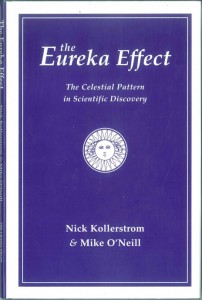 of celestial aspects in several groups, whereas the present 358-page Eureka goes further in telling the exciting stories of discovery. Also its databases are somewhat larger, as one would expect from a later, follow-up study.
of celestial aspects in several groups, whereas the present 358-page Eureka goes further in telling the exciting stories of discovery. Also its databases are somewhat larger, as one would expect from a later, follow-up study.Moments of illumination occur in the lives of eureka scientists and inventors. At these moments, the key to a problem dawns. Something new appears. This book tells the gripping stories of great inventors and eureka scientists. It establishes a synthesis between astrology and science.
The great moments of inspiration of eureka scientists, are timed by a celestial signature. This is, if you like, proof of astrology. The numbers five and seven turn up here: ‘septile’ aspects (inspiration) between the planets and ‘quintile’ aspects (creativity) occur far more often than expected by chance. The same aspects are also found very strongly in the natal charts of eureka scientists, such as Kepler and Einstein.
The “Aha!” Moment
For the eureka scientists concerned, such a moment of “Eureka!” inspiration may appear, in retrospect, as the turning-point of their lifetime. Many of us have had something like such ‘Aha!’ experiences, whether finding scientific explanation for how things work, or artistic inspiration.
This book looks at some three dozen great historical moments of invention. These are the times when eureka scientists’ inventions first worked. A distinctive celestial pattern appears, again, the septiles appear strongly.
The chapter ‘DNA and the Decile’ shows how at the moment when the DNA molecule was envisaged, the 36° ‘decile’ aspect, used in the scientific explanation of the DNA molecule, was strongly present in the heavens.
When eureka mathematician William Hamilton envisaged his ‘quaternions’ which are fourfold mathematical vector-operations, nearly the whole solar system was in square-patterns in relation to Earth: that’s what we call the 4th harmonic, to do with square aspects. Proof of astrology is given here.
Celestial Aspects
“Eureka!” moments are the drama and glory of the scientific enterprise, when new ideas arrive. This study of inspiration brings together two different subjects: history of science, and astrological harmonic theory. It is based upon a discovery, made back in the 1980s, that at times of special historic inspiration and scientific explanation, certain celestial aspects tend to be strong – these are the ‘septiles,’ based on the one-seventh division of the circle. Also strongly related to these events are ‘quintiles’ using the one-fifth division, and these aspects are more linked to creative thought.
Historic Moments
The history of science is be-jeweled with celebrated “Eureka!” moments when
inspiration dawned, and these remain of perennial interest. These special “Eureka!” moments are here used to test a concept of celestial influence.
The grand moments of “Eureka!” creative innovation have given a direction to our civilization. Einstein got the notion for his relativity theory while walking in the Swiss alps, altering Space and Time and finding a scientific explanation for how they work together. This moment was reflected in the celestial harmony in the heavens. It is time for us to realize that the theory of astrology applies to such wonderful “Eureka!” moments. This helps us to appreciate the manner in which celestial influence really works.
This work looks at the exciting times when great inventions first worked – and tests these dates in an astrological manner. Again the inspirational septiles are found to be present. Britain and America have led the world in these great inventions.
This work uses the harmonic theory developed by Kepler (who invented the quintile) and also in the 20th century by John Addey, and it confirms that astrological methods really do work. It claims that these ‘genesis moments’, the “Eureka!” watersheds in the history of science, are the ideal way to test these.
It describes the subjective feelings of the great eureka scientists and inventors at their eureka moments, and does not go into technical detail about what exactly they found. This book is suitable for a non-scientist who wants to take an interest in the history of science.
Illustrations
This book contains 83 graphs, charts and illustrations to make its harmonic theory easier to understand.
[paiddownloads id=”3″]
Click here to buy your e-book. Then look in your email for the download link.
For a hardback copy of ‘Eureka’, please go here to buy it online:
Its not a Kindle book, its got too many diagrams and tables.
The Author
The author has a PhD in the history of science, plus he has a science degree from Cambridge. He is known for having published many articles on the validity and testing of astrology and has lectured on both sides of the Atlantic on these topics.
He has a couple of dozen academically-published history of science articles (in case readers need reassurance) and was elected as a Member of the New York Academy of Sciences, while an honorary member of staff at University College London in its Science & Technology Studies Department.
Newton, Halley and Uranus * Relativity Dawns on Einstein * Quintiles, Septiles and Moments of Mystical Illumination

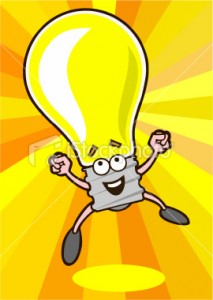
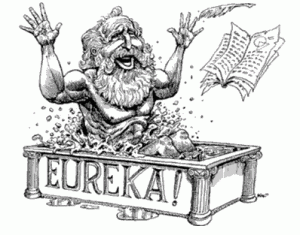
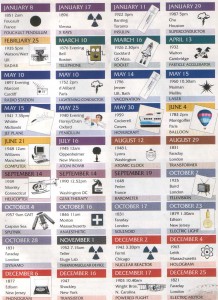


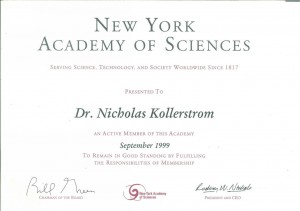


Leave a Reply